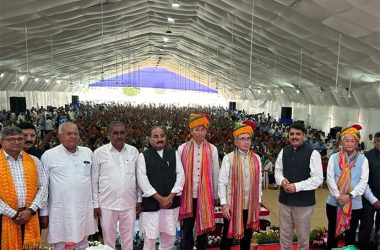In an unprecedented move that could only be described as paving the way to the heavens, the Indian government has taken giant strides in upgrading the celestial pathways leading to the revered Chardham – a quartet of sacred destinations nestled in the heart of the Himalayas. The ambitious Chardham project, as revealed by Union Minister of Road Transport and Highways, Nitin Gadkari, aims to revamp 5 existing National Highways, ensuring smoother pilgrimages and bolstering strategic mobility across a divine stretch of approximately 825 km.
Spanning the spiritual hotspots of Yamunotri, Gangotri, Kedarnath, and Badrinath, along with the Tanakpur to Pithoragarh section, pivotal for the Kailas-Mansarovar yatra, the project has already seen 606 km of heavenly highways completed. This grand undertaking isn’t just a testament to engineering prowess but also a journey of meticulous planning, where geological, geotechnical, hydrological, and topographical oracles are consulted to ensure the roads stand the test of time and the elements.
In a plot twist worthy of mythic tales, the Hon’ble Supreme Court of India, playing the role of the divine overseer, has directed the constitution of a High Powered Committee (HPC). This ensemble cast of environmental guardians from esteemed institutions is tasked with assessing the impact of these celestial corridors on the Himalayan valleys. Under their watchful eyes, an “Oversight Committee” ensures that the path to enlightenment respects the sanctity of its surroundings, blending development with devotion.
This divine intervention in infrastructure development not only highlights the balancing act between progress and preservation but also sets a precedent for future projects in ecologically sensitive zones. As these highways stretch towards the heavens, the journey to Chardham is set to become less about the trials of travel and more about the purity of pilgrimage, all under the watchful guidance of both the divine and the judiciary.








